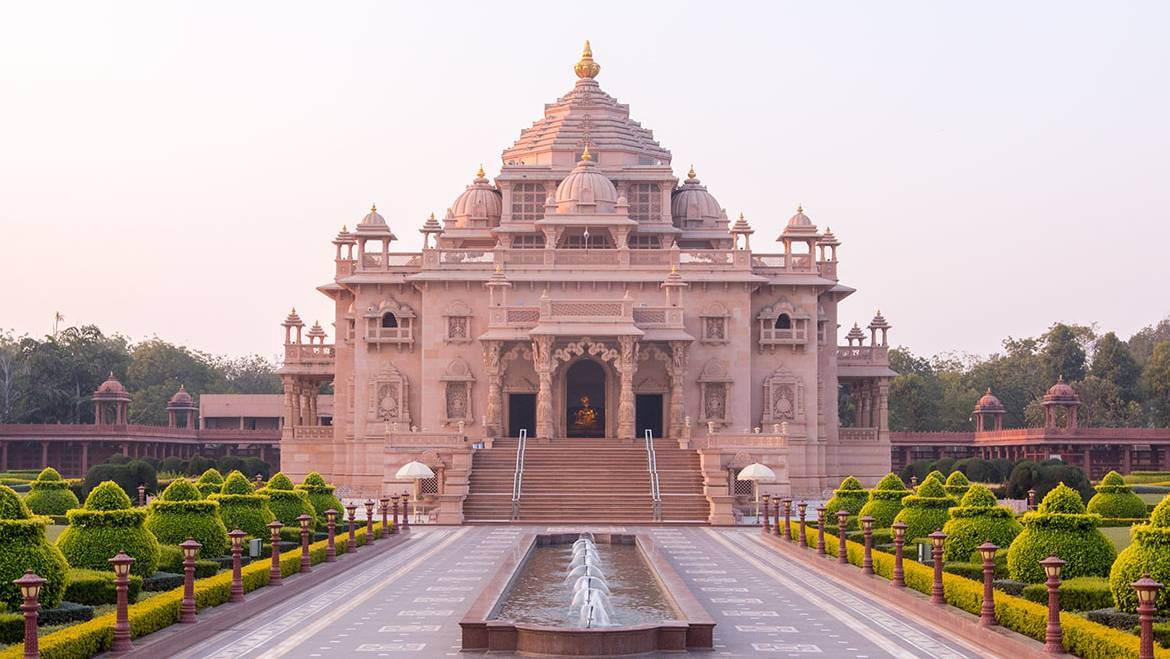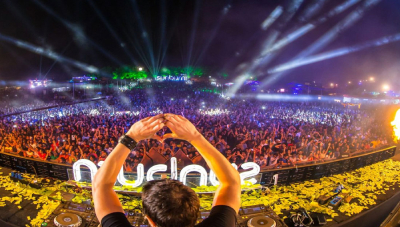India being part of the world’s oldest civilizations is a land of rich history, countless beliefs, traditions and legends surrounding the religions. India takes pride in the country’s rich cultural and religious history as it is the birth land of the traditions of Hinduism, Jainism, Buddhism and Sikhism. India is a land where people of different religious beliefs live in harmony and brotherhood. Hinduism is believed to be the world’s oldest religion. Unlike other religions, Hinduism does not have a founder but is instead a fusion of religions. Various ancient manuscripts and scholars describe the religion as a traditional way of living, a religion whose beginning and ending cannot be traced.
Also Check out: Popular Religious Tour Packages
The heavenly abode of the Almighty on Earth is referred to as ‘Mandir’ by the Hindus. You will find majestic temples at mostly every corner of the country. Every temple has a unique history and legend attached to it. During the ancient times, the Indian rulers would patronize artists and sculptures for creating exceptional masterpieces in the form of temples under their reign. Tour My India introduces you to some of the most popular and magnificent temples of the country.
List of Most Popular Temples in India
| Temple Name |
City/State Name |
| Badrinath Temple |
Chamoli, Uttarakhand |
| Sun Temple |
Konark, Odisha |
| Brihadeeswara Temple |
Thanjavur, Tamil Nadu |
| Somnath Temple |
Somnath Gujarat |
| Kedarnath Temple |
Rudraprayag, Uttarakhand |
| Sanchi Stupa |
Sanchi, Madhya Pradesh |
| Ramanathaswamy Temple |
Rameshwaram, Tamil Nadu |
| Vaishno Devi Temple |
Katra, Jammu and Kahsmir |
| Siddhivinayak Temple |
Mumbai, Maharashtra |
| Gangotri Temple |
Uttarkashi, Uttarakhand |
| Golden Temple |
Amritsar, Punjab |
| Kashi Vishwanath Temple |
Varanasi, Uttar Pradesh |
| Shri Jagannath Temple |
Puri, Odisha |
| Yamunotri Temple |
Uttarkashi, Uttarakhand |
| Meenakshi Temple |
Madurai, Tamil Nadu |
| Amarnath Cave Temple |
Jammu and Kashmir |
| Lingaraja Temple |
Bhubaneswar, Odisha |
| Tirupati Balaji Temple |
Tirumala, Andhra Pradesh |
| Kanchipuram Temples |
Kanchipuram, Tamil Nadu |
| Khajuraho Temple |
Khajuraho, Madhya Pradesh |
| Virupaksha Temple |
Hampi, Karnataka |
| Akshardham Temple |
Delhi |
| Shri Digambar Jain Lal Mandir |
Delhi |
| Gomateshwara Temple |
Shravanabelagola, Karnataka |
| Ranakpur Temple |
Pali, Rajasthan |
| Shirdi Sai Baba Temple |
Shirdi, Maharashtra |
| Shri Padmanabhaswamy Temple |
Trivendrum, Kerala |
| Dwarkadhish Temple |
Dwarka, Gujarat |
| Laxminarayan Temple |
Delhi |
| Iskcon Temple |
Vrindavan, Uttar Pradesh |
| Mahabodhi Temple |
Gaya, Bihar |
| Kamakhya Temple |
Guwahati, Assam |
| Neelkanth Mahadev Temple |
Rishikesh, Uttarakhand |
| Mukteswara Temple |
Bhubaneswar, Odisha |
| Sri Ranganathaswamy Temple |
Srirangam, Tamil Nadu |
Recommended Tour Packages
Badrinath Temple, Uttarakhand
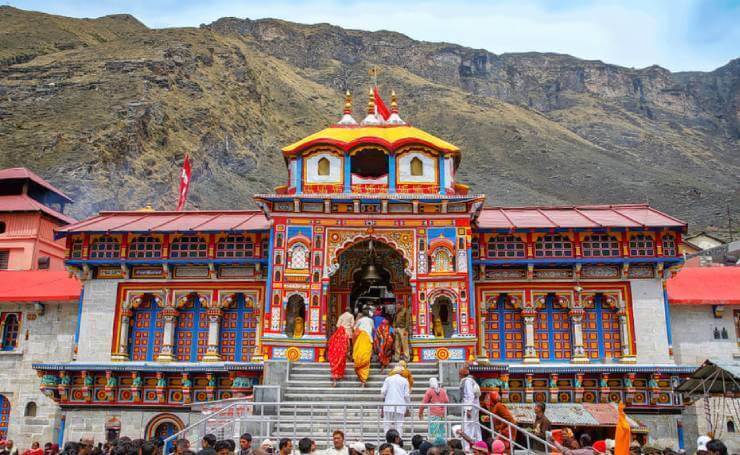
Situated close to the Alaknanda River, the abode of Lord Badrinath is located in the Chamoli district of Uttarakhand. This holy shrine of Lord Vishnu is one of the Char Dhams of Hindu religion.
It is also one of the four Chota Char Dham pilgrimage sites (comparatively minor pilgrimage sites). The temple is one of the 108 temples dedicated to Lord Vishnu (Divya Desams), which finds its mention in the works of Tamil saints who existed in the 6th to 9th century.
The ancient abode of Lord Vishnu can be visited only between the months of April and November because the temple remains closed during the other months due to harsh weather conditions. Two of the most famous festivals related to the temple are –
- Mata Murti-Ka-Mela – A celebration where Lord Badrinath’s mother is worshipped in the month of September.
- Badri-Kedar Festival – A celebration in the month of June for 8 days in the temples of Badrinath and Kedarnath. It seeks to educate people on the local traditions of Uttarakhand.
Also Check out: Shri Badrinath Yatra Tour Packages
Sun Temple, Odisha
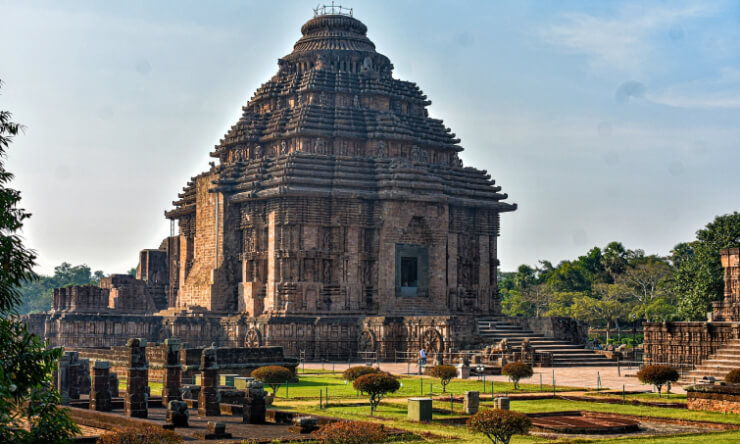
The Sun temple is situated in the small town of Konark situated in the Puri district of Odisha. This marvel of architecture is dedicated to Indian God of Sun, Surya. The temple has been built in the shape of his chariot which is drawn by seven horses.
The temple was built in the 13th century by a king called Narasimhadeva. There is an ancient legend attached to this temple, once Lord Krishna cursed one of his own sons with leprosy. To seek penance, his son, Samba worshiped Surya for twelve years.
Pleased with his devotion, Surya healed him. Samba made the Sun temple in return to express his gratitude. The mesmerizing beauty of the place was best summed up by Rabindranath Tagore: ‘Here the language of stone surpasses the language of man.’
Also Read: Other Popular Pilgrimage Places in Odisha
Brihadeeswara Temple, Tamil Nadu
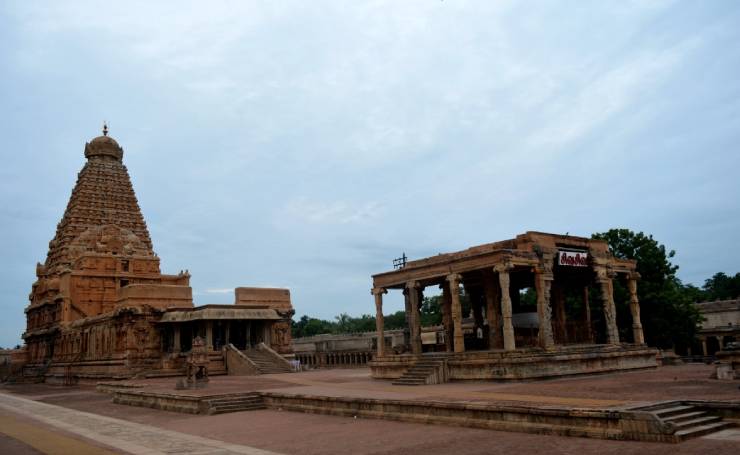
Brihadeeswara Temple is one of the largest South-Indian temples situated in Thanjavur, Tamil Nadu. Also known as Peruvudaiyar Kovil and RajaRajeswaram, this 11th century temple was built by the Chola emperor Raja Raja Chola I. Cholas are known for their admiration for art.
The opulence and artistic proficiency of Cholas is well reflected in the grand and magnificent architecture of the temple. Made entirely of granite stone, it was built as per the principles of Vaastu Shastra.
The most remarkable thing about this UNESCO World Heritage Site is that it doesn’t leave any shadow on the ground at noon. Dedicated to Lord Shiva, the temple speaks of the importance of religious beliefs in Hinduism.
Also Read: Popular Tourist Places in Tamil Nadu
Somnath Temple Gujarat
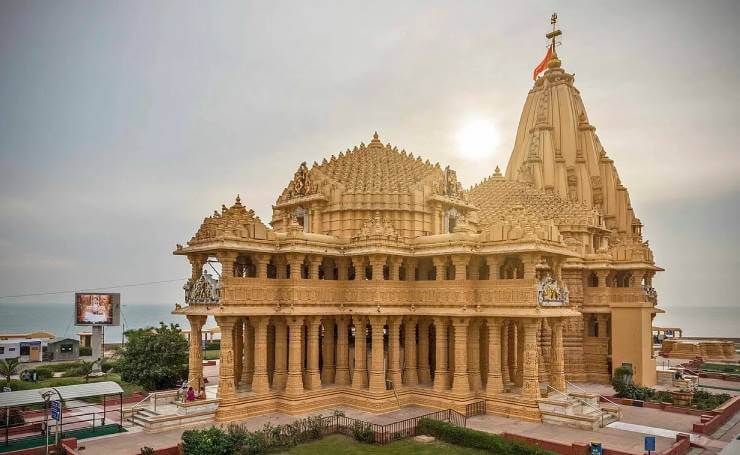
Somnath Temple is one of the oldest pilgrimage centres in India and finds mention in the ancient books of Shiv Puran, Skanda Purana and Shreemad Bhagvat Gita. Soma refers to ‘Moon God’, thus Somnath means ‘Protector of the Moon God’.
According to a legend, the Indian God of Moon, Soma was cursed by his father-in-law to lose his lustre. It was Lord Shiva who cured his illness and later Soma built this temple in his honour. It is one of the most revered ‘jyotirlinga’ among the 12 jyotirlingas of India.
The temple is located in Prabhas Kshetra in Saurashtra (Gujarat). Prabhas Kshetra is where Lord Krishna is believed to have left his mortal body. The place also has a Somnath museum, Junagadh gate, beach and a sound and light show to amuse the pilgrims.
Other Interesting Blog to Read
Kedarnath Temple, Uttarakhand
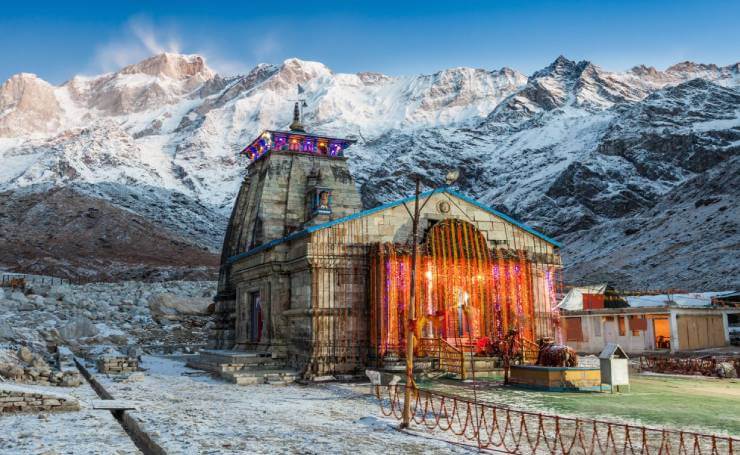
Situated in the Himalayan range of Garhwal (Uttarakhand), Kedarnath temple is one of the most sacred shrines in the world. The holy abode of Shiva is believed to have been built by the Pandavas to atone for their sins during Mahabharata.
The temple was restored by Adi Sankaracharya in the 8th century. It is one of the Chota Char Dhams of Uttarakhand and requires the pilgrims to trek a distance of 14 kms on the hilly terrain.
Standing at a height of 3,583 metres, surrounded by the glaciers and snow-clad peaks, the temple is closed during winters due to severe weather conditions. Even the idol of Lord Shiva is shifted to Ukhimath during the months the temple remains closed.
Other Interesting Blog to Read
Sanchi Stupa, Madhya Pradesh
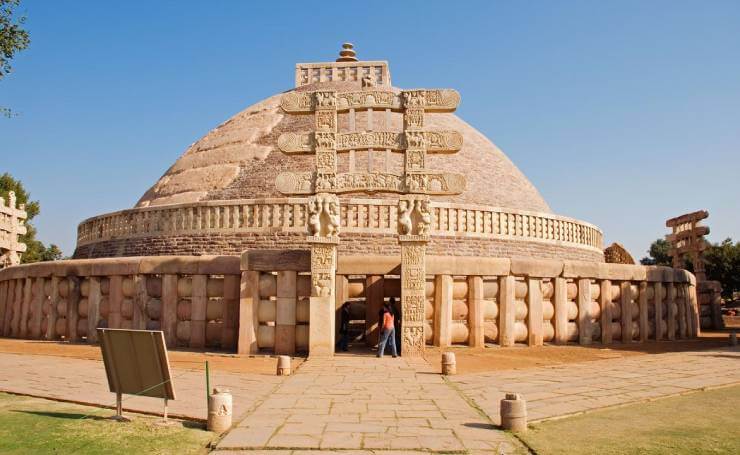
Surrounded by the ruins of smaller stupas and monasteries, Sanchi Stupa is an architectural marvel in Sanchi, believed to house the relics of Lord Buddha. Also known as the Great Stupa, this famous pilgrimage site in India was built by the Indian Emperor Ashoka, the Great in the 3rd century BC.
As the oldest stone sculpture of the country, this UNESCO World Heritage Site takes you back in the days of the prosperous Mauryan Era. There are four intricately designed gateways surrounding the Stupa known as toranas, each individually symbolizing the four emotions of love, peace, courage and trust.
Other Interesting Blog to Read
Ramanathaswamy Temple, Tamil Nadu
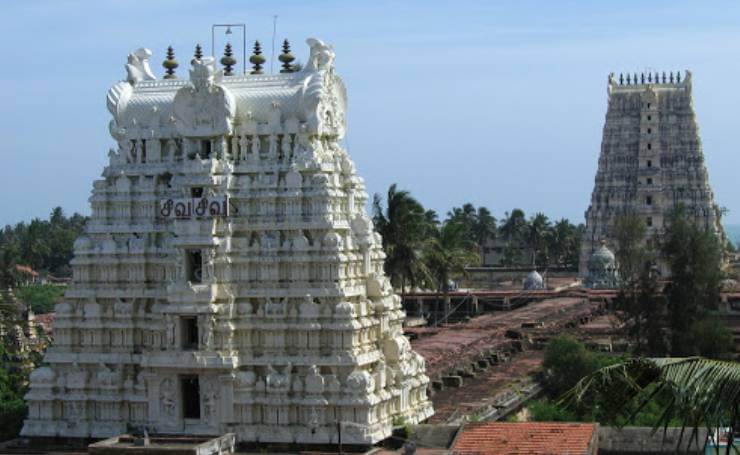
Rameswaram is a small island town in Tamil Nadu known for being one of the pious Char Dhams of the Hindus. As per the legend, Lord Rama with his wife Sita landed on the shore of this island after defeating the demon king, Ravana who was a brahmin.
To seek atonement for killing a brahmin, Lord Rama wanted to pray to Lord Shiva. He asked Hanuman to fly to Kailash and bring a Shivalinga. In the meantime, Goddess Sita made a small lingam. The one made by Goddess Sita is called Ramalingam and one brought by Lord Hanuman is called Vishwalingam.
As per the instructions of Lord Rama, Vishwalingam has to be worshipped before the Ramalingam which is followed even today.
Other Interesting Blog to Read
Vaishno Devi Temple, Jammu and Kahsmir
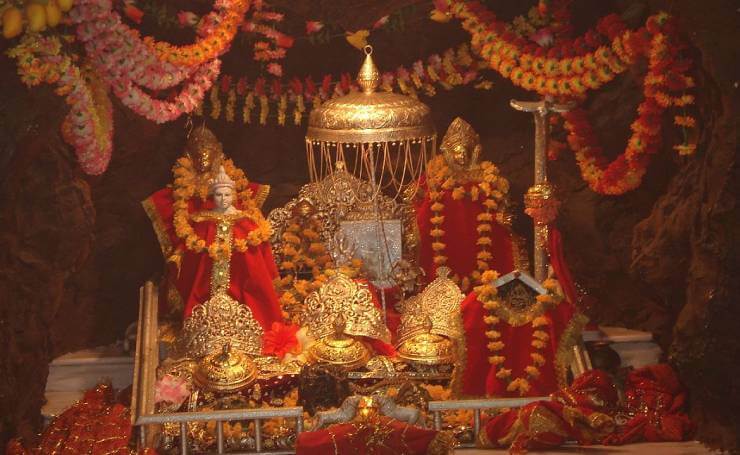
One of the most holy sites for Hindu pilgrims, Vaishno Devi Temple is nestled on the Trikuta mountain in Jammu & Kashmir. As per the legend, Vaishno Devi under the disguise of a young girl, Vaishnavi was being chased by a black magician, Bhairo Nath.
He was pestering her to marry him. In order to escape him, she fled to the mountains but he followed her there too. After stopping at present day Banganga, Charan Paduka and Adkwari, the Goddess finally reached the holy shrine. When Bhairo Nath showed no sign of backing down, Vaishnavi was compelled to kill him.
She beheaded him at the mouth of the cave and his head fell at a distant hill top. After realizing his mistake, Bhairo Nath begged for her forgiveness. Taking pity on him, the Goddess blessed him with a boon that anyone who takes up the pilgrimage to the shrine will also have to visit Bhairo Nath Temple, only then will the journey be completed.
Thousands of devotees every year visit the shrine in order to seek blessings from the Great Goddess of power, humility and grace.
Recommended Tour Packages
Siddhivinayak Temple, Maharashtra
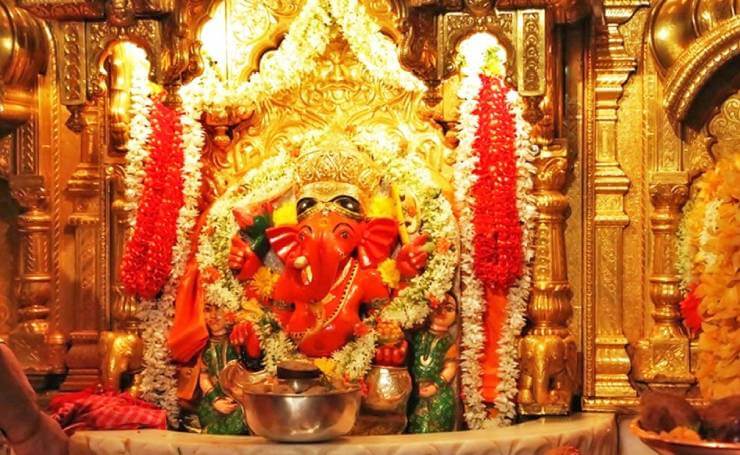
Located in Prabhadevi, Mumbai, Siddhivinayak Temple is one of the eight Ganesha Temples in Maharashtra. It is also one of the richest temples in India. Lord Ganesha is the supreme deity of the temple who is always the first one to be worshipped before commencing something new in life.
This is the reason why he is also known as Vighnaharta (the terminator of impediments). On the wooden doors of the shrine, eight impressions of Lord Ganapati (Ashtavinayak) are carved. Siddhivinayak temple consists of one of the eight images of Lord Ganesha.
Other distinct images are spread over seven temples situated in Maharashtra. The temple is visited by the devotees all days of the year but Tuesday is the day when maximum numbers of people come to pray to the Lord for good luck.
Other Interesting Blog to Read
Gangotri Temple, Uttarakhand
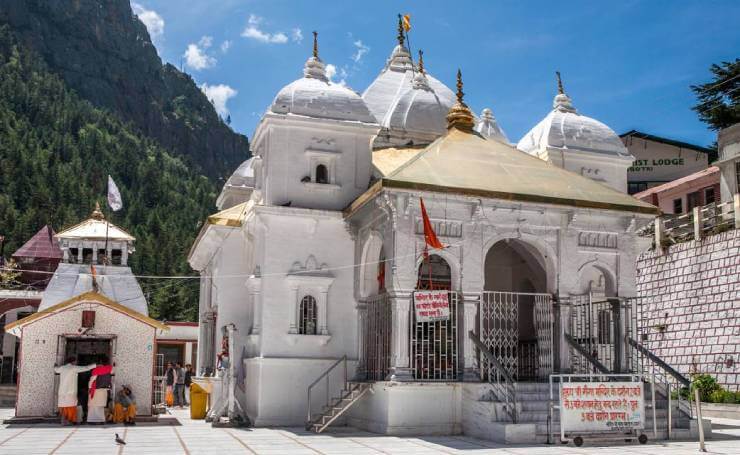
Nestled amidst the Himalayan range of Uttarkashi district in Uttarakhand, Gangotri Temple is part of the Chota Char Dham Yatra. This temple holds great importance due to its glorifying history.
As per the legends, King Bhagirath performed a rigorous penance for thousand long years in order to please Mother Ganga to come down to Earth from heaven to release his ancestors from a curse. Pleased with his sincere devotion, Mother Ganga agreed to come down to Earth.
But she asked him to persuade Lord Shiva to help her descend to the earth as otherwise the entire planet wouldn’t be able to sustain her. After being pleased with Bhagirath’s prayers, Lord Shiva granted his wish and sustained Mother Ganga in the locks of his hair.
This temple marks the origin of the holy river Ganges from the locks of Lord Shiva.
The holy temple of Gangotri opens up on Akshaya Tritiya (usually falling in the months of April or May). On this occasion, an idol of Ganga Maa is brought back from the Mukhyamath temple (her winter abode), which is at a distance of 20 km. On Diwali, every year, Maa Ganga again travels back to the Mukhyamath temple.
Other Interesting Blog to Read
Golden Temple, Punjab
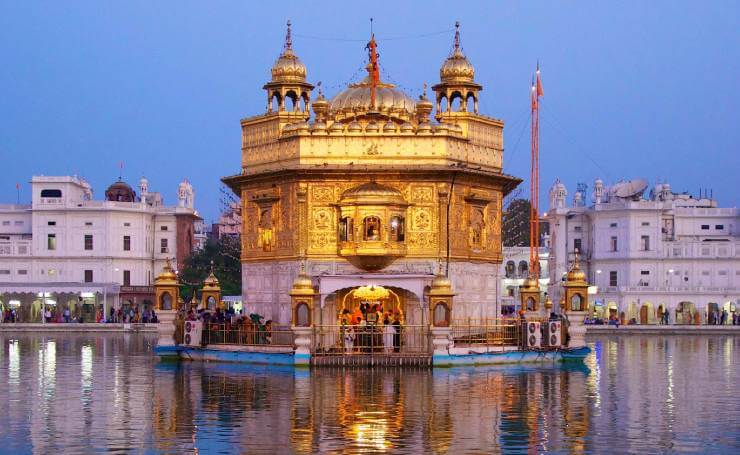
Sri Harmandir Sahib, also known as Darbar Sahib or Golden temple is the most pious site of pilgrimage in Amritsar, Punjab for people who follow Sikhism. The temple is built on the values of universal brotherhood and equality.
The four doors, opening in the four prominent directions, welcome people from any faith or race to seek religious and spiritual contentment. The structure, revered for its majestic architecture, is built on a lower level than that of the immediate surroundings, symbolizing the value of humility.
The holy book of the Sikhs, Guru Granth Sahib, was first placed in Sri Harmandir Sahib after its completion.
Other Interesting Blog to Read
Kashi Vishwanath Temple, Uttar Pradesh
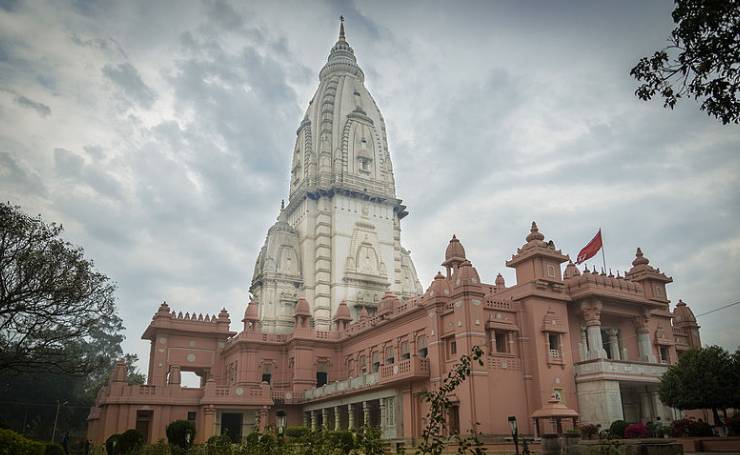
Located in the oldest surviving city of the world- Varanasi, Kashi Vishwanath Temple is one of the most visited temples in India. It is the most revered of the twelve jyotirlingas located in India.
The temple stands in all-might at the western bank of River Ganges and teaches mankind the true meaning of life and death. A one-time visit to the Kashi Vishwanath Temple is equivalent to the visit to other eleven jyotirlingas of Lord Shiva.
This heavenly abode is visited by many distinguished personalities such as Adi Shankaracharya, Swami Vivekananda, Goswami Tulsidas, Gurunanak among others.
A visit to this sacred temple is believed to be one of the ways to attain ‘moksha’ (ultimate liberation of the soul).
Also Read: Pilgrimage Tourism in Uttar Pradesh
Shri Jagannath Temple, Odisha
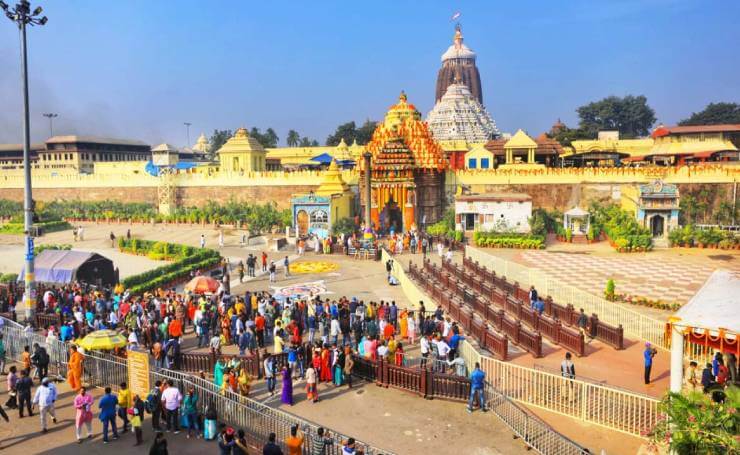
Built in the 12th century, Jagannath temple is situated in Puri, Orissa and is popularly called Jagannath Puri. Dedicated to Lord Krishna, the temple is one of the Char Dhams of India.
Inside the main temple, with the idol of Lord Krishna (Jagannath) in between, the idols of Lord Balabhadra and Goddess Subhadra are placed. Non-Hindus cannot enter the premises of the temple.
They can get a good view of this magnificent temple from the roof-top of the Raghunandan Library located just opposite to the temple. The annual and world famous Rath Yatra conducted at Puri gives a chance to get a good glimpse of the Lord Jagannath along with Balabhadra and Subhadra riding on the chariots.
Thousands of people pulling the sacred chariot makes the yatra a worthy spectacle.
Other Interesting Blog to Read
Yamunotri Temple, Uttarakhand
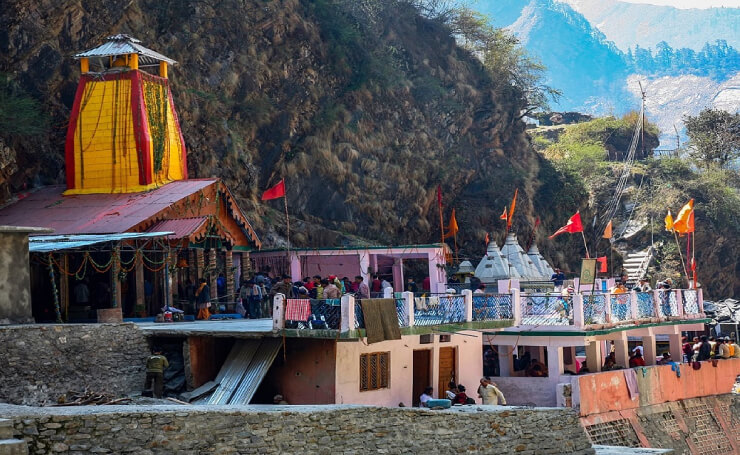
Yamunotri temple was built in the 19th century in the Uttarkashi district of Uttarakhand and was damaged and rebuilt twice due to the damages inflicted by natural disasters.
Dedicated to River Yamuna, the second holiest river of India, the temple also forms part of the four Chota Char Dham Yatra. Located at a height of 3291 meters, the shrine of Mother Yamuna houses the idol of the Goddess in black marble.
The temple opens up on the day of Akshaya Tritiya and closes the day after Diwali. The idol of Mother Yamuna is shifted to a nearby village of Kharsali during winters. The area around the Yamunotri temple doesn’t have any motorable roads, so it has to be reached on foot.
Also Check out: Yamunotri Yatra Tour Packages
Meenakshi Temple, Tamil Nadu
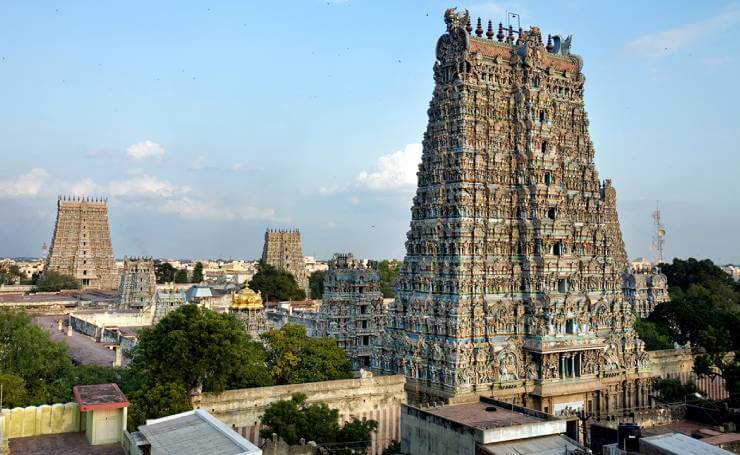
This architectural wonder is situated in Madurai, Tamil Nadu and is dedicated to Goddess Parvati (also known as Meenakshi) and her husband Lord Shiva. Madurai is the second biggest city of India and is also one of the oldest cities of the world.
A dip in the Golden Lotus tank, situated in the temple, is considered auspicious and is usually taken before visiting the main shrine of the God and Goddess. As per a legend, the pond was created by Lord Shiva and is even older than the temple.
The temple has a hall, which consists of 985 pillars; each pillar is intricately carved with distinct figurines. The 12th century colorful temple was among the thirty nominees of the ‘New Seven Wonders of the World’.
Other Interesting Blog to Read
Amarnath Cave Temple, Jammu and Kashmir
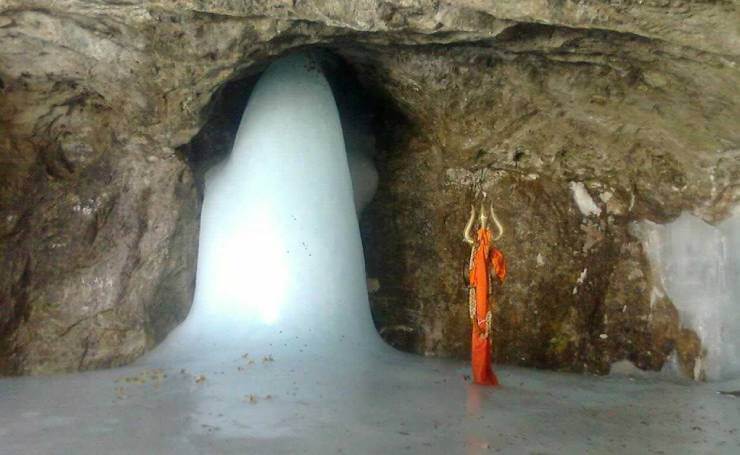
The holy cave of Amarnath is located at an altitude of 3,888 meters in the Union Territory of Jammu and Kashmir. Engulfed with snow-clad mountains, the cave mostly remains covered with snow during the year.
In the summer season, between the months of June and August, it becomes accessible and hence opens up for the pilgrims. The cave is believed to be 5000 years old. As per a popular legend, Buta Malik, a Muslim shepherd, met a holy man who handed him a bag of coal.
On reaching home, he found that the coal got converted into gold. Moved by the miracle the shepherd went in search of the saint and instead found the sacred abode of Lord Shiva.
The pilgrimage to Amarnath consists of a 5-day trek during which the devotees brave tough and uncertain climatic conditions and walk for forty miles.
Recommended Tour Packages
Lingaraja Temple, Odisha
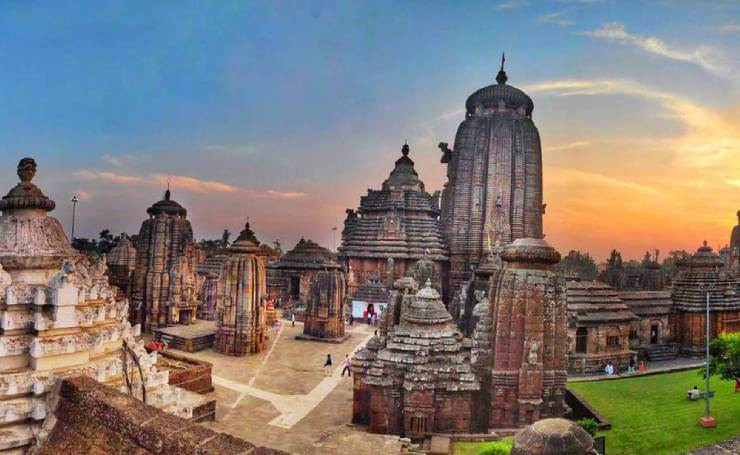
Lingaraja temple is one of the oldest and largest temples of the ‘Temple City of India’ – Odisha. Built in the typical architectural style of Kalinga, the temple doesn’t only attract religious devotees but also history enthusiasts.
The idol of Lingaraj usually represents Lord Shiva, but in this temple, it symbolizes Lord Shiva and Lord Vishnu. The combined form of both the Gods is referred to as ‘Harihara’.
A lake called Bindu Sagar touches the temple on one side and is said to have healing powers. Non-Hindus are not allowed to enter the premises; thus, they can see the magnificent structure from a platform outside the temple.
Also Check out: Complete Odisha Tourism Guide
Tirupati Balaji Temple, Andhra Pradesh
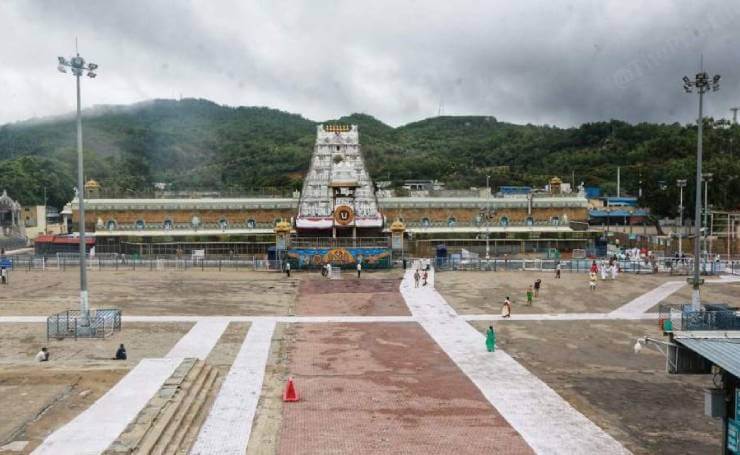
Located in the hilly town of Tirumala in Andhra Pradesh, the temple is also known as Tirumala Venkateswara temple. The temple is devoted to Lord Venkateshwara, who is popularly called ‘Balaji’ and is the incarnation of Lord Vishnu.
Venkateshwara Tirupati Balaji is the second richest temple in India. The ancient temple was visited by many rulers of great South-Indian dynasties. The temple celebrates many festivals, most famous of them being Brahmotsavam (also known as ‘Salakatla brahmotsavam’), which goes on for 9 days and witnesses thousands of devotees.
The prasadam offered in the shrine is famous all around the world for its unique delectable taste. As a religious ritual, people get their heads tonsured in large numbers here, so much so that every year about 6 million US dollars are earned through the auction of hairs.
Other Interesting Blog to Read
Kanchipuram Temples, Tamil Nadu
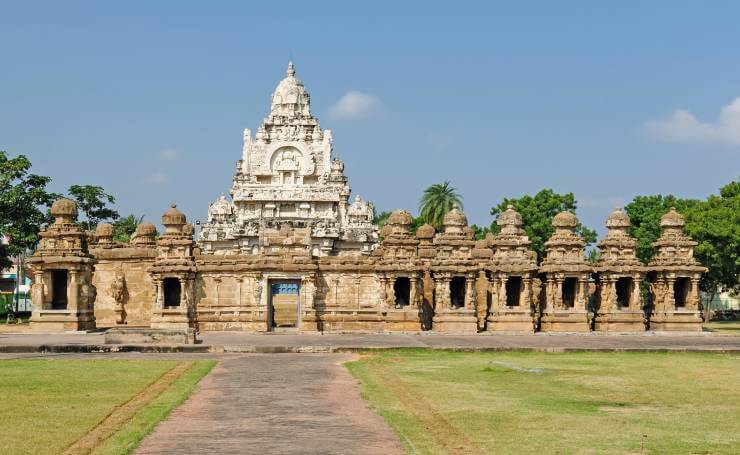
The City of Thousand Temples – Kanchipuram, Tamil Nadu is one of the seven sacred places in India wherein the people can attain moksha, as per the Hindu religion. Every temple in Kanchipuram is a fascinating element of architecture. Among the most revered temples of Kanchi three major ones are mentioned below:
- <>Kamaksstronghi Amman Temple: Goddess Kamakshi is one of the manifestations of Goddess Parvati. Unlike her other idols which are in standing position, the enchanting idol at Kamakshi temple is sitting in Padmasana- a yogic sitting posture.
- Ekambareswarar Temple: This shrine of Lord Shiva is also the largest among all the temples in Kanchipuram. The main lingam of the Ekambareswarar temple is made of sand and is believed to be built by the Goddess Parvati herself.
- Varadaraja Perumal Temple: It is one of the 108 temples of Vishnu (Divya Desams). This temple along with the temples of Kamakshi and Ekambareswarar are collectively called Mumurtivasam meaning home of the trio.
Other Interesting Blog to Read
Khajuraho Temple, Madhya Pradesh
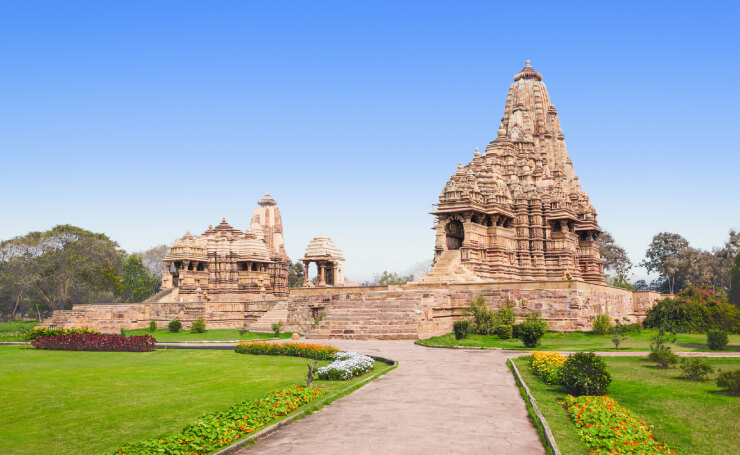
Khajuraho is a town in the state of Madhya Pradesh, which houses several temples built between 10th to 12th centuries. Spread across an area of 20 sq km, the monuments of the town are part of the UNESCO World Heritage Sites.
The temples are built of sandstone and dedicated to the deities of Hinduism and Jainism. The temples are popular worldwide for the erotic cravings, which can be seen along with other cravings depicting the daily chores of life.
It is believed that there were over 75 temples in the area but only 20 exist today. The temples have been divided into three zones – eastern, western and southern. The Western zone consists of the most famous temples; the largest temple of Khajuraho, Kandariya Mahadeva Temple, falls under this zone.
An annual Khajuraho Dance Festival, celebrating classical dance forms of India, is held against the background of Chitragupta or Vishwanath temple in the first week of February every year.
Other Interesting Blog to Read
Virupaksha Temple, Karnataka
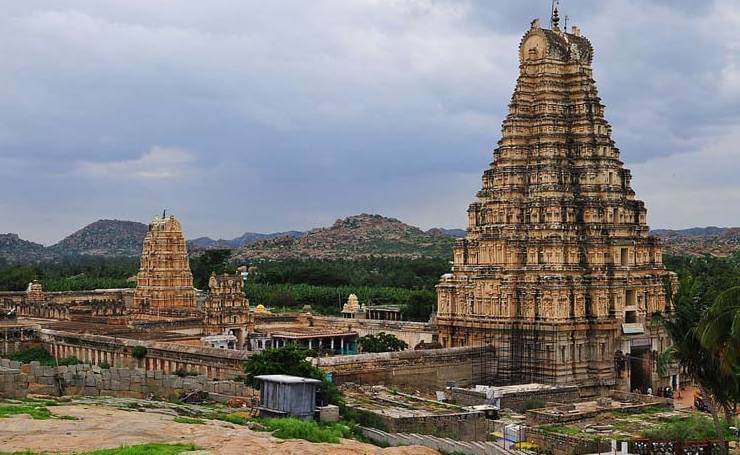
Built in the 7th century, the temple is famous for being a functioning temple ever since it came into existence. Located in the village of Hampi, it is one of the most famous temples among the various other temples of Hampi. All heritage sites of Hampi have been recognized and are a part of UNESCO World Heritage Sites.
A shrine of Shiva, Virupaksha temple is a very important religious centre as well as a popular tourist destination. The pilgrimage centre has expanded in scale over period of time. Shiva in the form of Virupaksha is the consort of local Goddess Pampa and that is why the temple is also called Pampapathi Temple. Many festivals take place in the temple celebrating the engagement and wedding of the couple.
Also Read: Heritage Tourism in Karnataka
Akshardham Temple, Delhi
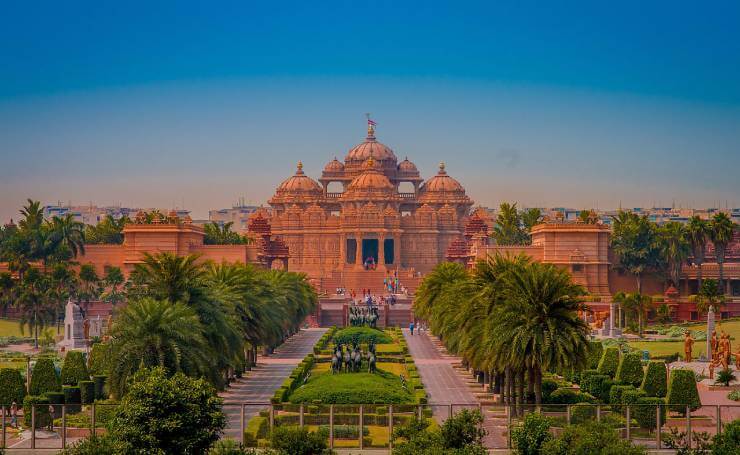
Constructed on the principles of Vastu Shastra and Pancharatra Shastra, this temple is situated near the banks of River Yamuna in Delhi. The authenticity of the temple is reflected in its resemblance with ancient Indian architecture and the spirituality the place exudes.
The principal deity of the temple is Lord Swaminarayan, an incarnation of Lord Vishnu. The 11-feet idol lies below the central dome of the temple. The structure has been built of Rajasthani pink stone and Italian Carrara marble.
The magnificent temple of Akshardham looks more stunning during the night with the beautifully installed lighting arrangements. There are many activities and events like exhibitions, movies, statues and boat rides through which information about the history and philosophy of the Swaminarayan sect and its founder is given to the visitors.
Light and music show, which takes place in the evening, is the most fascinating element of the temple.
Also Read: Popular Hindu Pilgrimage Sites in Delhi
Shri Digambar Jain Lal Mandir, Delhi
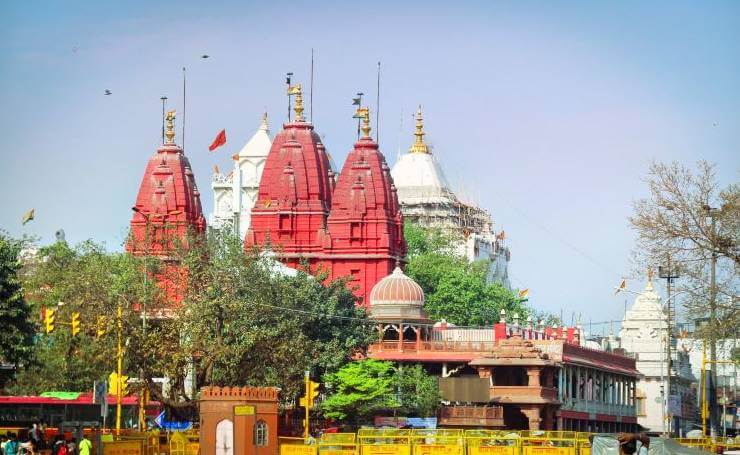
Built during the reign of Mughal emperor Shah Jahan in 1656, Shri Digambar Jain Lal Mandir is the oldest Jain temple in Delhi. Made in the honor of the 23rd Tirthankara, Parashvanath, the temple is made of red sandstone.
Standing right across the Red Fort, the temple consists of a charitable bird hospital, which have different wards for different species, a research laboratory and an intensive care unit.
The hospital came in to being in 1956 and exemplifies one of the basic principles of Jainism, which states that all living beings, no matter how small or insignificant have a right to freedom.
Also Read: Jain Pilgrimage Sites in Delhi
Gomateshwara Temple, Karnataka
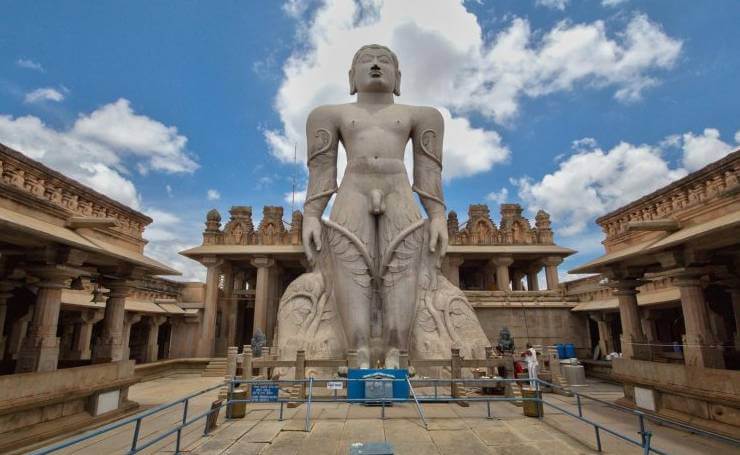
Situated in the Shravanabelagola town of Karnataka, Gomateshwara temple is dedicated to Lord Bahubali also known as Gomateshwara. Built in the 10th century, it is one of the most important pilgrimage places for the Jain community.
The statue leaves people around the world in awe because of its unique structure. Standing at an enormous height of 58.8 ft the idol is carved out of a single granite rock. This monolithic structure stands at such a great height without any external support.
The base of the Bahubali idol is decorated with inscriptions written in three different languages – Marathi, Kannada and Tamil. The most important event that is celebrated in the temple once every 12 years is called Mahamastakabhisheka.
It is a very important festival for the Jain community during which Lord Bahubali is bathed and smeared with various ceremonial things like saffron paste, sugarcane, turmeric, milk and vermillion and offered various precious stones and coins of gold and silver.
Other Interesting Blog to Read
Ranakpur Temple, Rajasthan
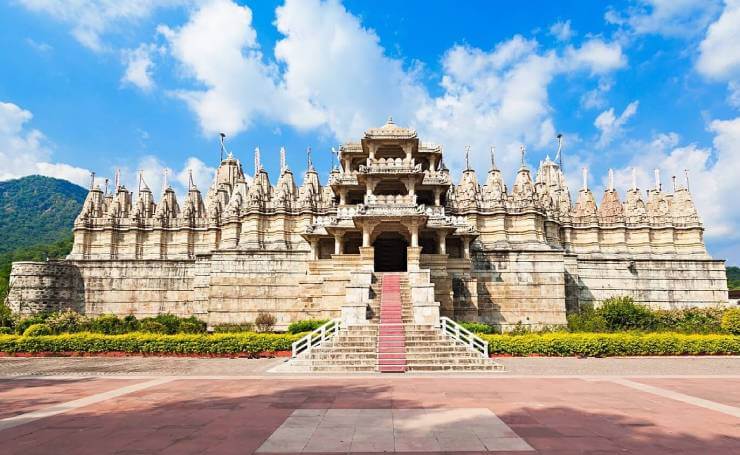
Ranakpur is a village in the Pali district of Rajasthan situated between Udaipur and Jodhpur. One of the very famous pilgrimage sites in India, the majestic 15th century Jain temple is dedicated to Lord Adinatha.
It is counted among the five major sacred sites of Jainism. The marvelous architecture of the temple structure listed it among the 77 nominees for determining the new Seven Wonders of the World.
Completely built from light colored marble, the great structure is well supported with the help of about 1400 intricately carved pillars. The temple uses the natural light of sun as the only means of lighting.
Other Interesting Blogs to Read
Shirdi Sai Baba Temple, Maharashtra
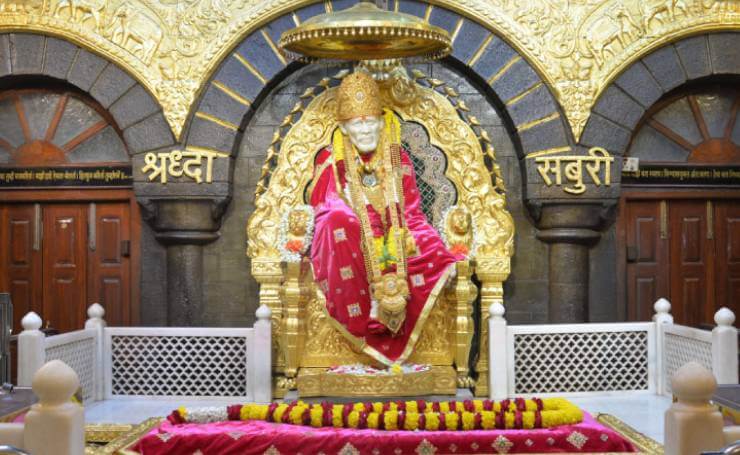
The holy temple of Sai baba was built in 1922 in Shirdi, Maharashtra. Located about 296 kms from Mumbai, the small town of Shirdi has attained fame due to its association with Shri Sai Baba.
Spread over an area of 200 sq. Km, the shrine was made over the Samadhi of Sai Baba. Each day around 25,000 devotees come to offer prayers to Sai Baba.
Ramnavmi, Guru Purnima and Vijayadashami are the major festivals that are celebrated with great enthusiasm and passion.
Also Read: Popular Religious Tourism Sites in Maharashtra
Shri Padmanabhaswamy Temple, Kerala
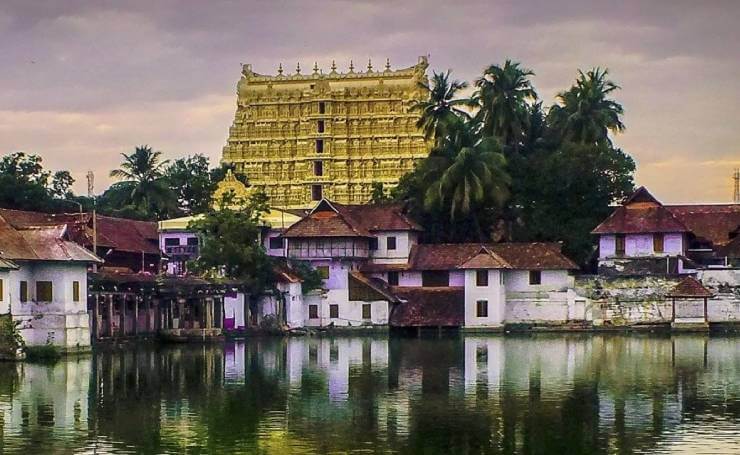
Thiruvananthapuram, the capital city of Kerala literally means the ‘City of Lord Anantha’. Shri Padmanabhaswamy Temple is one of the 108 Divya Desams (sacred dwellings of Lord Vishnu).
The temple can be visited only by the Hindus. There is a strict dress code while entering the temple for men (dhoti without any kind of shirt) and women (sari or skirt and blouse). The elegant and splendid idol of Lord Vishnu is reclining over the five hooded serpents called Anantha in a deep yogic sleep.
The idol is very fascinating as it displays the supreme trinity of Brahma, Vishnu and Mahesh (or Shiva). Lord Brahma is shown sitting on a lotus coming out of the navel of the Lord’s statue. That is why Lord Vishnu is also called Padmanabha, i.e. lotus-navel.
Under the right palm of his stretched hand is a Shiva lingam, completing all three powers into one. The temple is also popular as the richest Indian temple in the world.
Also Read: About Pilgrimage Tourism in Kerala
Dwarkadhish Temple, Gujarat
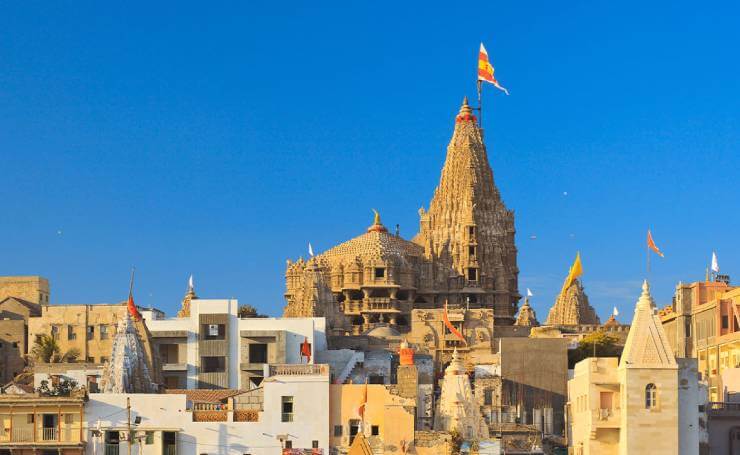
The holy abode of Lord Krishna, Dwarkadhish temple is situated in the Dwarka city of Gujarat. Also known as Jagat Mandir, the temple has two doors for entry and exit of the pilgrims. The entry door is called the Swarg Dwar (doorway to heaven) and the exit door is called Moksha Dwar (the doorway to liberation).
A part of the pious Char Dham Yatra, the 5-storied temple is supported by 72 pillars. Situated on the banks of River Gomti the temple reaches the height of 51.8 meters and a flight of 56 steps need to be taken to reach the Swarg Dwar. Inside the shrine, Lord Krishna dazzles his devotees through his idol built in black stone.
Other Interesting Blog to Read
Laxminarayan Temple, Delhi
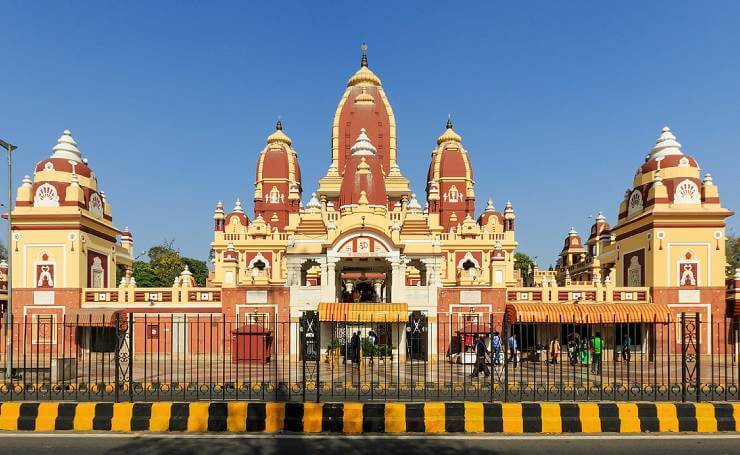
Inaugurated by Mahatma Gandhi in 1939, the temple was built by the industrialist Baldeo Das Birla in Delhi and can be visited by people of all caste and creed. Laxminarayan is an incarnation of Lord Vishnu when he is with his consort, Goddess Lakshmi.
The primary shrine is devoted to Laxminarayan and the other smaller shrines are dedicated to other Indian Gods like Lord Shiva, Lord Hanuman, Lord Krishna, Lord Ganesh and Lord Buddha.
Spread over an area of 7.5 acres the temple is one of the top tourist attractions in Delhi and has a huge garden, fountains and a large hall called Geeta Bhawan.
Other Interesting Blog to Read
Iskcon Temple, Uttar Pradesh
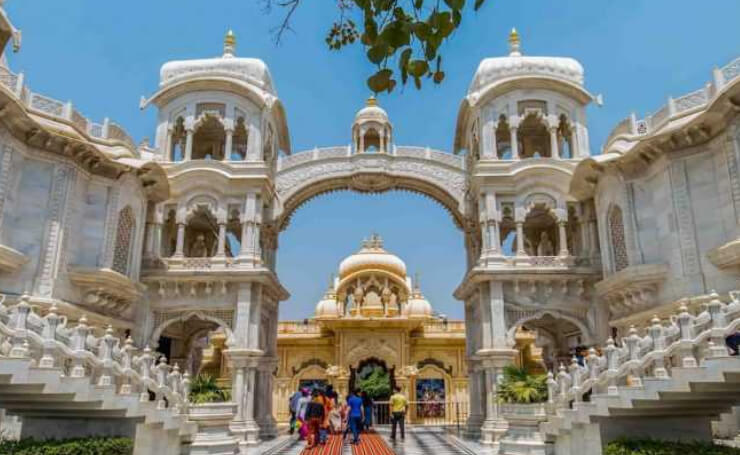
Also known as the Krishna Balaram Mandir, ISKCON (International Society for Krishna Consciousness) was built in 1975. Located on the holy land of Vrindavan in Mathura, Uttar Pradesh, the temple is believed to be the abode of Lord Krishna in his younger days.
The ISKCON Temple is well known for their utmost standard of cleanliness they maintain. The chants of ‘Hare Krishna’ reverberate in the temple all hours of the day.
The temple belongs to the Gaudiya Vaishnava sect of Hinduism, which was founded by Chaitanya Mahaprabhu in the 16th century. Inside the temple there are idols of Krishna, Radha, Balarama, along with the idols of Chaitanya Mahaprabhu and Swami Prabhupada (founder of ISKCON).
Also Read: Mathura Tourism Guide
Mahabodhi Temple, Bihar
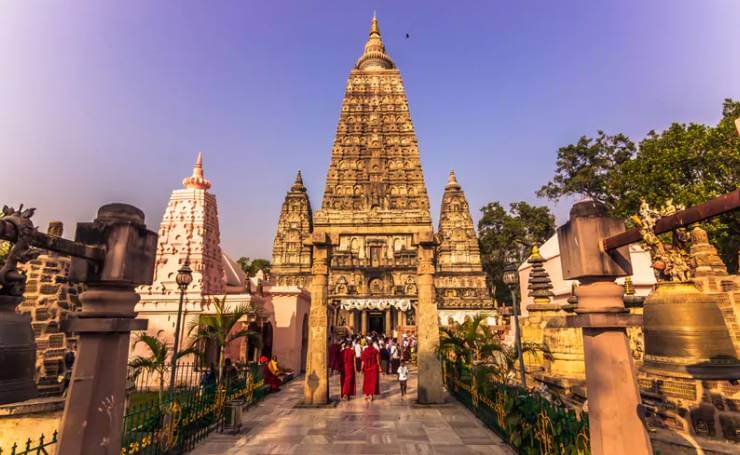
Located in the ancient city of Bodh Gaya in Bihar, Mahabodhi Temple literally means the ‘Great Awakening Temple’. It is the sole-surviving shrine out of the 84,000 shrines erected by King Ashoka The Great.
This auspicious abode of peace is where Prince Siddhartha attained nirvana and became Lord Buddha at the age of 35 years. The Great Stupa finds its reference in the travelogue of the well-known Chinese explorer, Huen Tseng.
The temple’s unique and authentic architectural style has earned a place in the UNESCO World Heritage Sites. Mahabodhi Mahavira as it is popularly called is one of the greatest pilgrimage sites for people who follow Buddhism.
Other Interesting Blog to Read
Kamakhya Temple, Assam
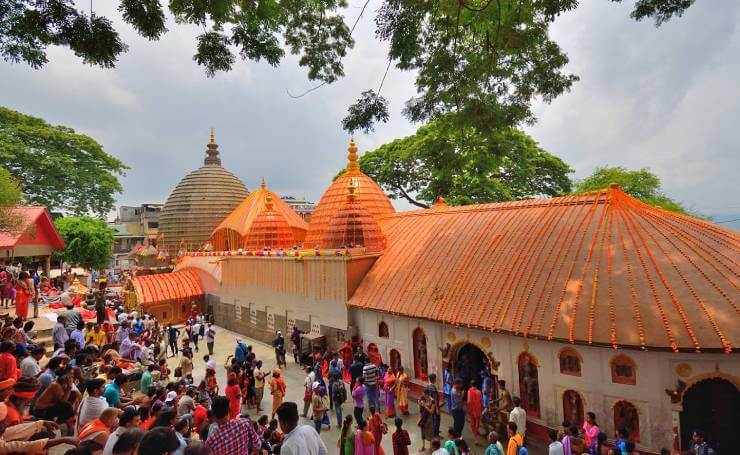
Nestled in the Nilachal Hill in the western part of Guwahati, Assam, is the Kamakhya Temple. According to Kalika Purana, Kamakhya Temple is one of the four primary shakti-peethas of Goddess Sati. It is also a centre for Tantra worship.
It is believed that the ‘garbhagriha’ of the temple houses the mythical womb of the Goddess. Known across the nation as the unique temple that celebrates womanhood, the Brahmaputra river near the temple turns red every year during the month of June. It is believed that the Goddess menstruates during this period which is celebrated as the power of woman to give birth.
Also Read: Complete Assam Tourism Guide
Neelkanth Mahadev Temple, Uttarakhand
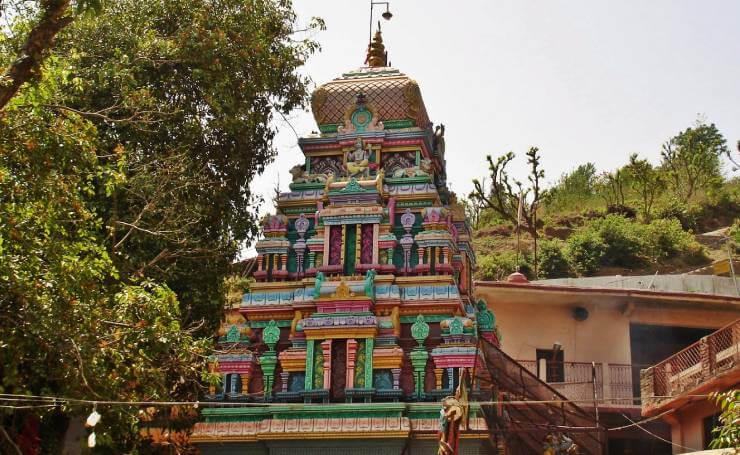
Built in the valleys of the hill town of Rishikesh, Neelkanth Mahadev Temple is one of the most prominent Hindu pilgrimage sites dedicated to Nilkanth, an incarnation of Lord Shiva.
According to the legend, the Devas (Gods) and Asuras (Demons) fought over the potion of immortality during Samundra Manthan. Lord Shiva drank the poison that came with it to save the world from apocalypse, thus marking the place which led to the construction of the Neelkanth Mahadev Temple.
Also Check out: Rishikesh Tourism Information
Mukteswara Temple, Odisha
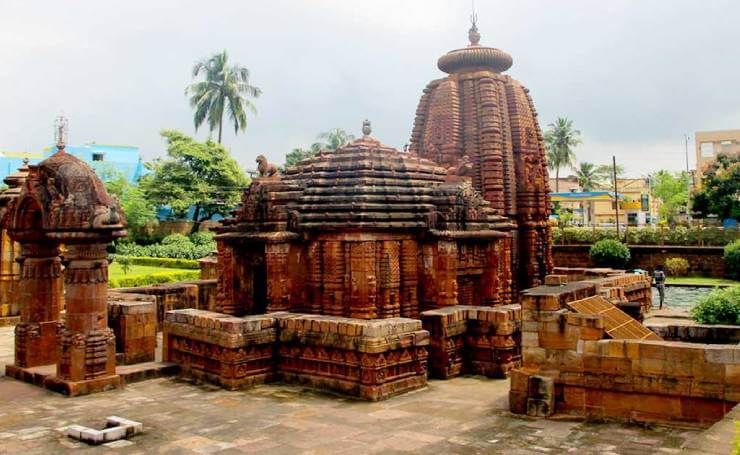
Constructed in the 10th century, Mukteswara Temple is dedicated to Lord Shiva who is the ‘Lord of Spiritual Freedom’ which means freedom from the cycle of life and death.
The temple has earned the title of the ‘Gem of Odisha Architecture’ because of the experimental style of temple architecture. Intricately carved figurines adorn the walls of the temple. The most talked about feature of the temple is its magnificent arched gateway that depicts Buddhist scriptures.
The Odisha Tourism Department organizes the Mukteswar Dance Festival which attracts a huge crowd and is held every year from 14th January to 16th January.
Other Interesting Blog to Read
Sri Ranganathaswamy Temple, Tamil Nadu
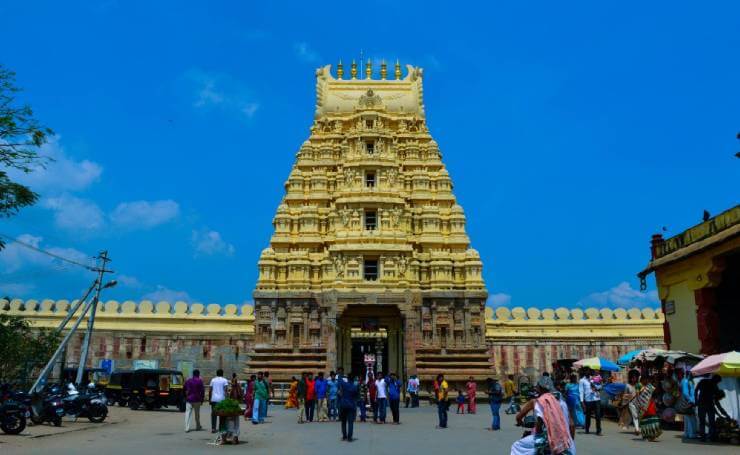
Located in the city of Srirangam in Tamil Nadu, Sri Ranganathaswamy Temple is the world’s largest functioning temple. It was consecrated in 984 A.D. by a local chief.
The sanctum houses a reclining form of Lord Vishnu known as Raganatha. Lord Vishnu is seen reclining on his snake, Adisesha under a canopy formed by its seven hoods with Goddess Lakshmi at his feet.
The temple is one of the five most sacred sites of worship called Pancharanga Kshetram.
Other Interesting Blogs to Read
To understand India and its various aspects of spirituality and religion, one should start his journey with the temples. Thousands of legends that simplify the complexity of life and death can be heard and seen on the walls of Indian temples.
Imagine getting lost in a land of great knowledge, secret path of nirvana and vibrant cultural beliefs, that is what it feels like to be in a country like India. Spiritual Tourism is not only a trend in the modern world but has been in existence in India since ancient times.
Tour My India brings to you different chapters of this long journey of spirituality, beliefs and reality!
Other Important Pilgrimage Tourism Links
Like & Follow our social media accounts at Twitter, Facebook, Linkedin & Instagram for getting the latest updates & offers on holiday packages.
Disclaimer: We do not take credit for some of the licenced paid images used in our blogs, whether from Google Images, Fotolia & Shutterstock. All such images are the copyrights of their respective owners and we try to provide credit for them wherever we can. If, however, any copyright image has been used on our blog, the concerned person can either mail us directly to remove the image or provide credit to whomsoever the image may belong to.
Frequently Asked Questions
Q.What are the famous temples in North India, Himalayas
Badrinath, Kedarnath, Gangotri & Yamunotri are the most famous temples in North Himalaya region.
Q.What are the popular temples in South India
Some of the popular temples in South India are:
- Shri Padmanabhaswamy Temple
- Tirupati Balaji Temple
- Brihadeeswara Temple
- Ramanathaswamy Temple
- Meenakshi Temple
- Virupaksha Temple
- Sri Ranganathaswamy Temple
Q.Which is the largest temple in India?
The largest temple is believed to be Srirangam Temple in Tamil Nadu.
Q.Do I need to follow any dress code while visiting Hindu temples?
There is no particular dress code for visiting Hindu temples in India. However, women are advised not to wear revealing clothes. They should wear traditional sarees or salwar kameez whereas men prefer wearing dhoti & kurta.
Q.What is Char Dham Yatra?
Char Dham Yatra is a pilgrimage of Hindu devotees where they visit four destinations namely- Badrinath, Dwaraka, Puri and Rameshwaram.
About the author
Sheetal is a passionate traveler of paths less travelled. If curiosity to see places was a person, it would have been her for sure. Impromptu plans run her life. She only has one motive in life, i.e., happily roaming the world. Get on board with her journey to a life filled with places, people and magic!

 +91-9212777225
+91-9212777225 Plan Your trip
Plan Your trip